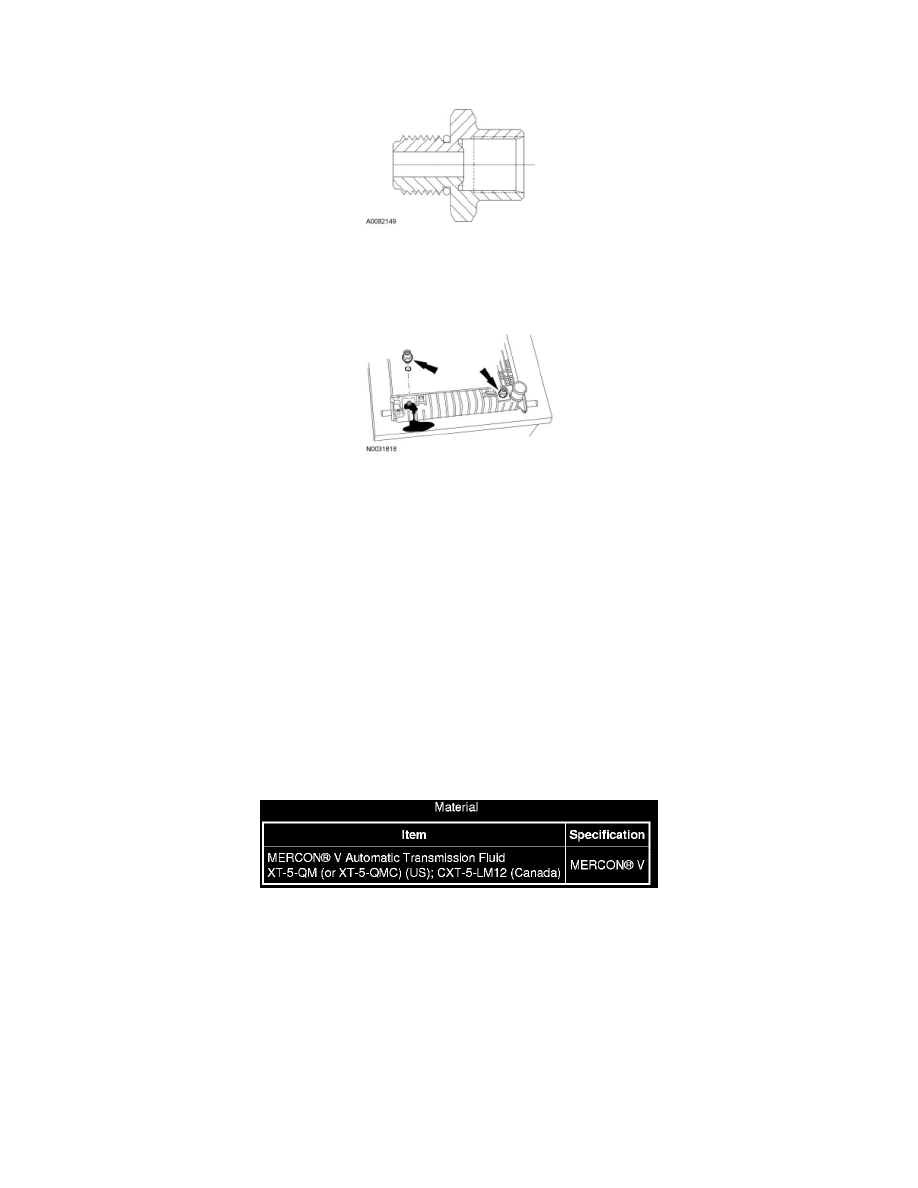Ranger 2WD V6-4.0L (2010)

-
If the threads are damaged, install a new radiator.
-
If the threads show no sign of damage, proceed to the next step.
8. NOTICE: Thread sealant or tape should never be used on the threads of the transmission fluid cooler radiator fittings. The use of such
materials will create a leak path.
Install a new O-ring on the transmission fluid cooler radiator fitting.
9. NOTE: Do not use air tools to tighten the transmission fluid cooler radiator fitting. Use a hand-operated torque wrench only.
Making sure that the gasket between the transmission fluid cooler and the inside of the radiator tank is still in place, install the transmission fluid
cooler radiator fitting.
-
Tighten to 60 Nm (44 lb-ft).
10. Follow the procedure to install a new O-ring on the other transmission fluid cooler radiator fitting.
11. Make sure that no radiator coolant has entered the transmission fluid cooler. Install the radiator in the vehicle.
12. Verify that both the transmission and the engine cooling system are at the correct fluid levels.
5R44E and 5R55E
5R44E and 5R55E
Transmission Fluid Cooler
NOTICE: When a transmission is disassembled to install new parts or the installation of a new or remanufactured transmission has been
carried out, new transmission fluid coolers, in-tank or auxiliary if equipped, will need to be installed. Using a suitable torque converter/fluid
cooler cleaner, clean and backflush the transmission fluid cooler tubes or damage to the new or remanufactured transmission may occur.
NOTICE: Use transmission fluid specified for this transmission. Do not use supplemental fluid additives, treatments or cleaning agent. The use
of these materials may affect transmission operation and result in internal damage to the transmission.
NOTE: Cleaning and backflushing the transmission fluid cooling system, along with following all the normal cleaning and inspection procedures as
outlined during disassembly and reassembly, will keep contamination from re-entering the transmission and causing a repeat repair.
When internal wear or damage has occurred in the transmission, metal particles, clutch plate material or band material may have been carried into the
transmission fluid cooler. These contaminants are a major cause of recurring transmission concerns and must be removed from the system before the
transmission is put back in use.
